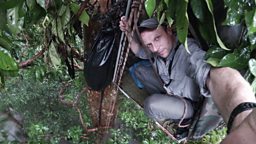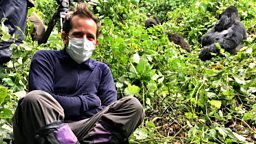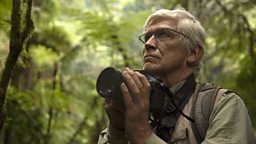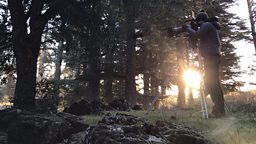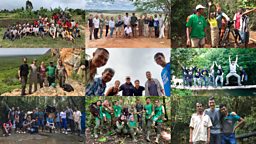Main content
Photo story: Behind the scenes
The Primates team have worked with people across the globe to capture some incredible footage. Here are some pictures which illustrate how the series was made.
Don’t rock the boat!

Brazilian camera operator JP created his own stabilised rig for filming from a small boat on the water, trying to get close to spider monkeys as they came down from the treetops to feed on aquatic plants.
Wet wet wet!

With daily tropical downpours, some of the most vital equipment we took on location were giant plastic sacks to cover the kit (and sometimes the crew)! Here director Camila is using radios to communicate with the camera operator above her in his filming hide 30m up in a tree. If the rainstorm got too intense, she had to be on standby to rescue him (and the camera) as everywhere around is completely flooded!
Cheeky monkeys

Bearded capuchins are very intelligent, and enjoyed investigating everything that the camera team took out into the dry caatinga forest. It is only by being so curious that these little monkeys have found ways of surviving in this harsh landscape.
Changing perspectives

The Atlantic forests of eastern Brazil are a biodiversity hotspot. Trees are covered in bromeliads which are the perfect habitat for foraging golden-headed lion tamarins. We wanted to take the viewer up into the world of the primates, so we developed a specialist pole cam that could stretch 12m into the canopy. We and also sent camera operator Jack up the tree for the perfect monkey-eye view!
Night patrol

The team managed to capture the first low light images of a slender loris family in Sri Lanka. Being small, shy and nocturnal, the crew needed plenty of patience! The filming lights were introduced very slowly, and paired with super sensitive low light cameras to reveal the story.
Tech in the Tropics
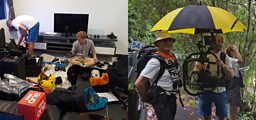
Arriving at location, the crew have to spend several hours unpacking and building the cameras before they are ready to head out filming. Once ready, the delicate camera kit has to be kept as dry as possible, which is tricky in the tropics!
Primates behind the lens
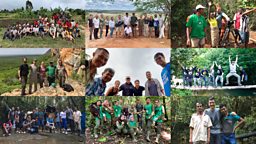
None of the filming would have been possible without the dedicated help of countless local scientists, porters, field guides and fixers all around the world – a crucial part of the human Primates team!
